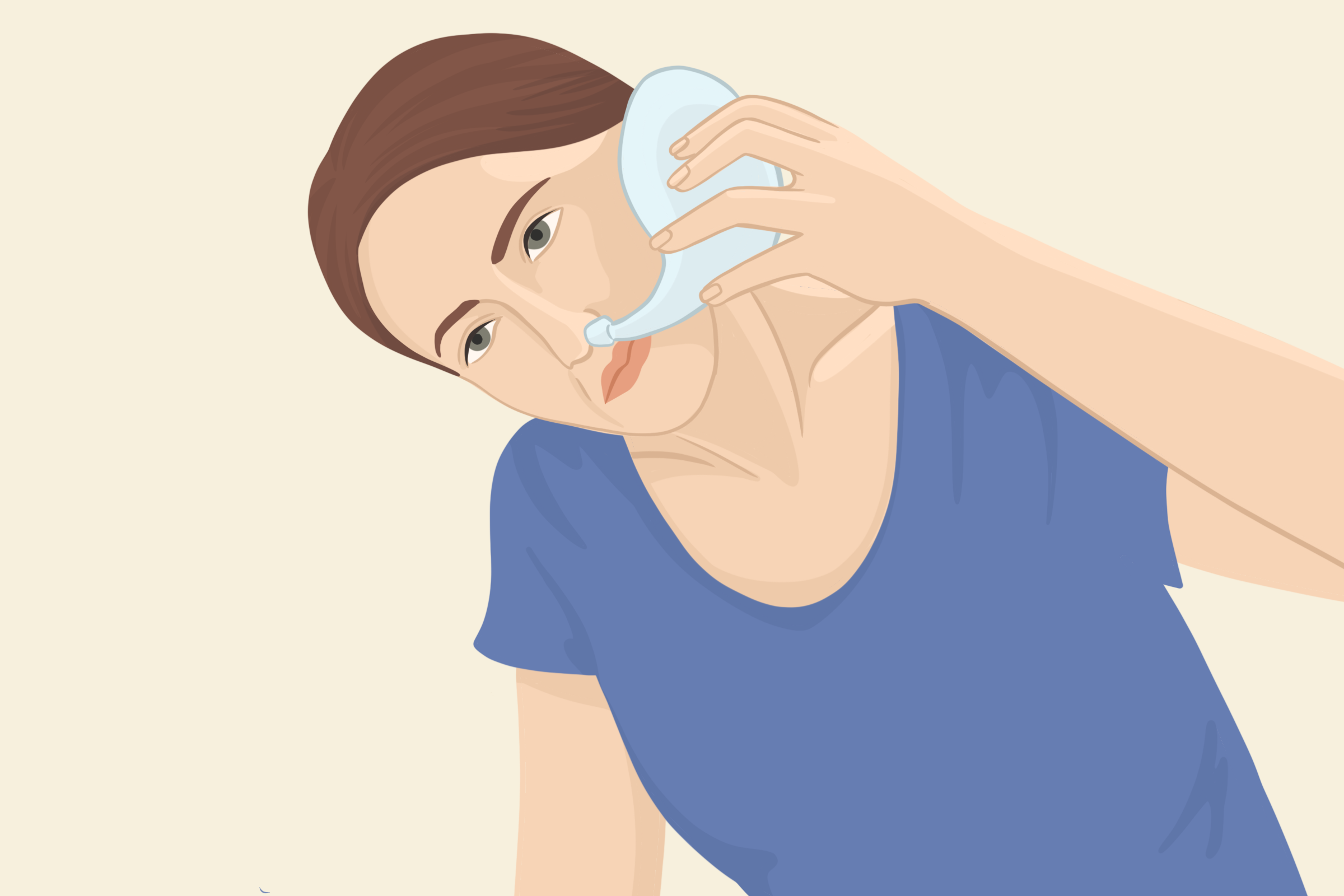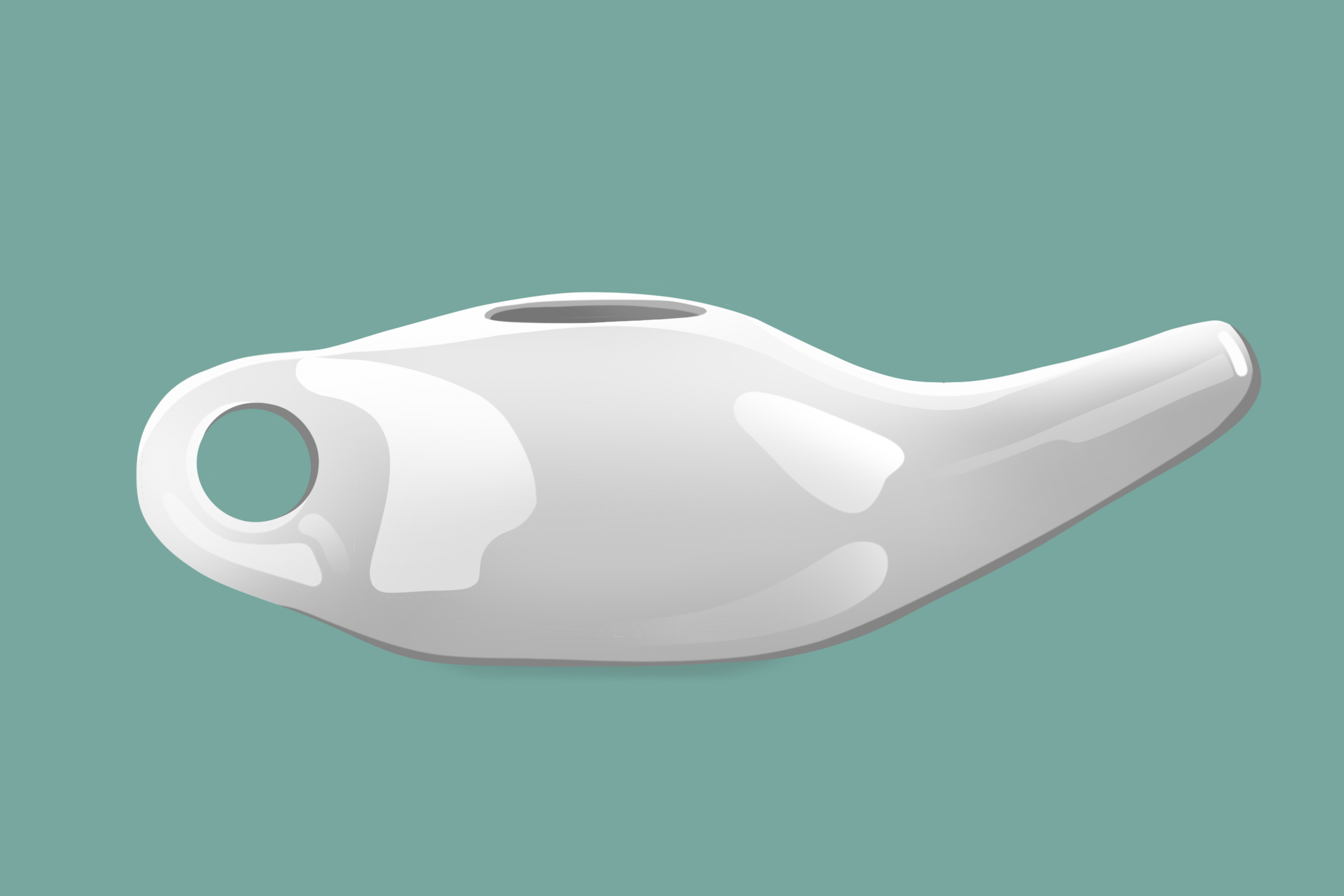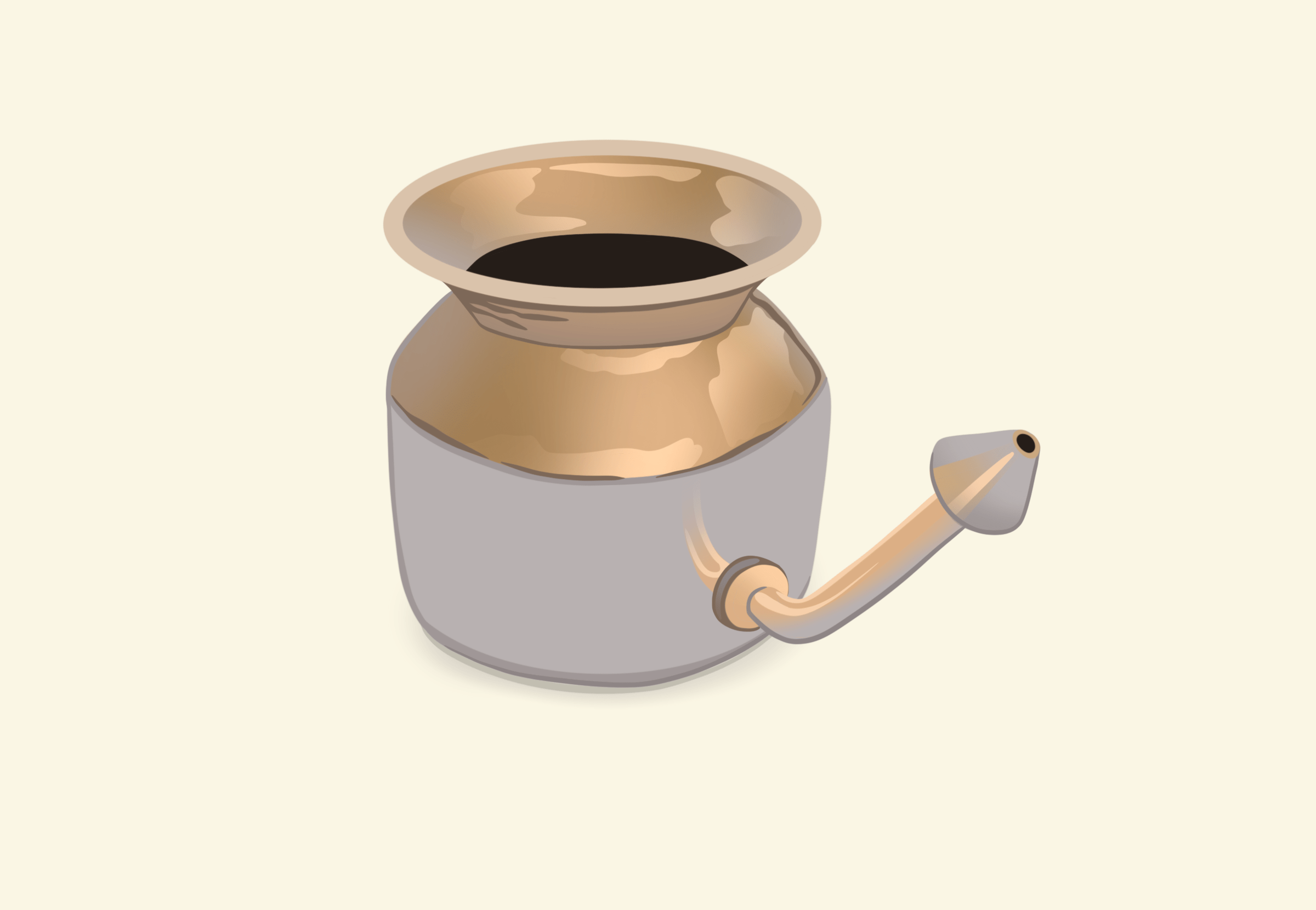


Neti pots are devices used to flush out your nasal passages. Often resembling a small teapot, they are used to pour salt water through your nasal cavity. They can be extremely effective at reducing snoring caused by a blocked nose.
If a stuffy nose is causing you to snore, nasal irrigation has benefits over other anti-snoring methods. Neti pots are:
Neti pots have their origins in an ancient Hindu practice of health and wellbeing, where nasal irrigation, or “jala-neti”, was practiced daily as a cleansing ritual. This alternative medicine technique has stood the test of time and has been adopted by many snorers with very successful outcomes.
“My snoring has stopped, I now sleep and breathe better. It’s so nice to find something that can solve a huge problem in my life so easily”
When your nose is congested your normal breathing is disrupted. Breathing through a partially blocked nose creates suction forces that act on your airway which causes it to narrow.
When you can’t breathe through your nose, mouth breathing ensues. This yields some shape changes to your airways which disrupts airflow and brings on snoring.
Using a neti pot helps to clear your nose and encourage healthier, quieter nasal breathing. Nasal irrigation:
If a blocked nose is making you snore, a neti pot can be an extremely effective way of reducing this blockage and sleeping quieter. We recommend them for:
Despite the well documented benefits, snorers are often deterred from using a neti pot because it just seems a bit weird and gross. Like anything, it gets easier with practice.
“The first few times you use it, you may feel that the sensation is a little weird. With regular use this will become something normal, not a big issue and will only make you feel better.”
There are four important things to get right when using a neti pot:
Here is SnoreLab’s process to get safe and effective use from your neti pot:
Unclean water can introduce harmful bacteria into your nose. DO NOT use untreated tap water. You have several safe water options:
The salt solution is important to help break down the excess mucus in your nose.
Many neti pots can be bought as kits where the appropriate salt mixture is provided in a sachet. These can also be bought separately.
If you want to make your own salt solution, DO NOT use standard table salt. Find a pure salt that is:
Recipes for homemade solutions vary, but a good guide is to add ½ teaspoon of the appropriate salt to the water, along with ¼ teaspoon of baking powder.
Now for the gross bit. With practice this will get much easier. To properly use the neti pot, water should be poured into one nostril so it comes out of the other. Follow these steps:
This part varies depending on what type of material your neti pot is made from. Regardless of material, thorough cleaning is a must to prevent the build-up of harmful bacteria in your neti pot.
Some neti pots can simply be put in the dishwasher. Others can be boiled wher
eas some need some scrubbing with warm water and soap.
Once done, let your neti pot air dry.

Whilst a neti pot might seem like a simple device, there are a few features you should look for when deciding on which neti pot is best for you …
Neti pots are available in different materials, each with their relative merits (jump to different neti pot materials: the pros and cons):
Neti pots need to be properly cleaned to be used safely. This is to stop you inadvertently introducing harmful bacteria that might lurk in the recesses of your neti pot, into your nose.
Look for a simple shape with a wide opening that has no difficult-to-reach nooks where mold and bacteria can hide. Also check that the design has no cavities within the handle as it is almost impossible to clean this effectively.
Consider that different materials have to be cleaned differently.
You need a reasonably tight seal on your nostril to use a neti pot effectively, therefore it is important to consider how the spout will feel on your nose.
Steel and copper pots are hard and cold, whereas plastics can be softer. Cheaper designs might have some rough edges whereas some pots come with a little silicon cap to provide enhanced comfort.
Are you likely to travel with your neti pot? If so, consider that ceramic neti pot materials are more breakable than others.
Whilst plastic pots are less likely to break if dropped, if they are made from thinner plastics (such as squeezable ones) they will probably wear out faster than steel or ceramic ones.
Some neti pots are made from soft plastics that can be squeezed. This allows you to control the pressure of the water going into your nose.
It might sound silly, but good ceramic neti pots can look like a nice, simple ornament. On the flip side, some plastic ones can be rather inappropriately shaped! Are you likely to leave it lying around?

This is the most common type of neti pot and the one that we recommend the most.
Pros:
Cons:
We recommend the Himalayan Chandra Ceramic Neti Pot. It has a smooth design that doesn’t allow mold build-up, the starter kit comes with a 10-ounce salt pot and measuring spoon, and it is not bad looking either.
Buy Now at Amazon - Buy

Pros:
Cons:
We like Dr Hana’s Nasopure. It has a very simple ergonomic design that is easy to use and easy to clean, with no handle, hence no cavity. The shape and squeezable material allows you to use this neti pot without having to tilt your head. The kit also contains 20 salt packets.
Buy Now at Amazon - Buy

Cons:
Our steel neti pot pick is the Health and Yoga Stainless Steel Neti Pot. It is large enough to not need refilling during a single irrigation, it has a nicely shaped conical tip, is very robust and has a simple design with very few areas for mold to form.
Buy Now at Amazon - Buy